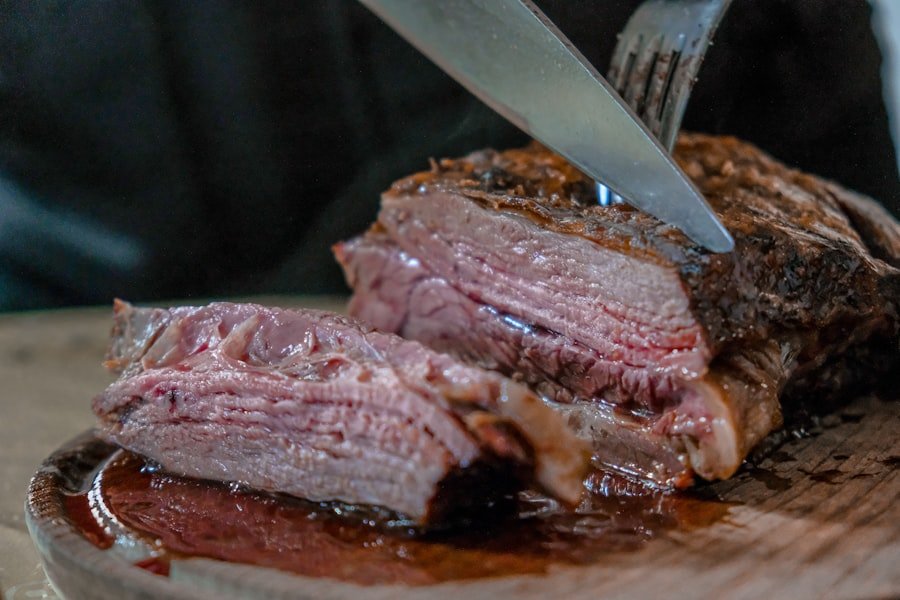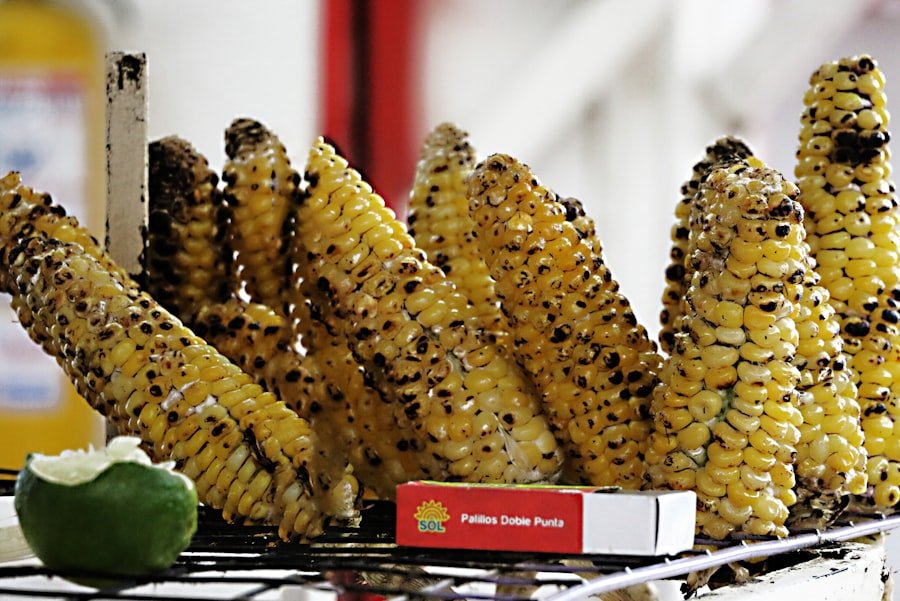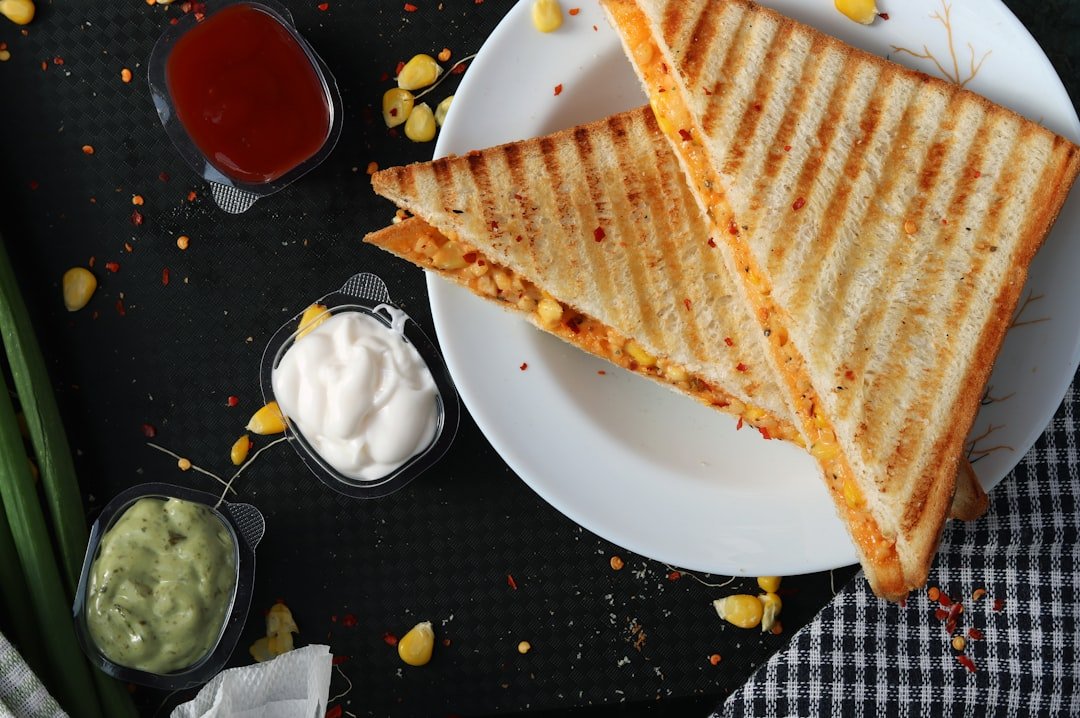When selecting a ribeye for grilling, several factors should be considered to ensure optimal results. The two main types of ribeye cuts are bone-in (cowboy ribeye) and boneless (Delmonico or Spencer steak). Bone-in ribeyes are known for their rich flavor and juicy tenderness, while boneless ribeyes offer a leaner, more uniform shape.
Marbling, the intramuscular fat visible as white streaks throughout the meat, is a crucial indicator of flavor and tenderness. Well-marbled ribeyes tend to remain moist and juicy during grilling. It is recommended to choose a ribeye that is at least 1 inch thick to prevent overcooking and drying out on the grill.
The USDA grades beef based on marbling, color, and texture. Prime is the highest grade, followed by Choice and Select. Prime grade ribeyes offer exceptional marbling and tenderness, making them ideal for grilling.
Choice grade ribeyes provide good marbling and flavor at a more affordable price point. Select grade ribeyes are leaner and less tender, making them less suitable for grilling. For the best grilling results, it is advisable to choose either Prime or Choice grade ribeyes with good marbling and appropriate thickness.
Key Takeaways
- Choose a ribeye cut with good marbling and a thick, even shape for the best grilling results
- Pat the ribeye dry and bring it to room temperature before grilling to ensure even cooking
- Season the ribeye generously with salt and pepper, and consider marinating it for added flavor
- Preheat the grill to high heat to achieve a nice sear on the ribeye
- Grill the ribeye for 4-5 minutes on each side for a medium-rare doneness, then let it rest before slicing and serving
Preparing the Ribeye for Grilling
Bringing the Ribeye to Room Temperature
Before cooking, it’s essential to bring the ribeye to room temperature by letting it sit out on the counter for 30-60 minutes. This step ensures that the steak cooks evenly on the grill, resulting in a perfectly grilled ribeye with a consistent doneness throughout.
Trimming Excess Fat
Before grilling, it’s crucial to trim any excess fat from the edges of the ribeye to prevent flare-ups on the grill. While some fat is desirable for flavor and juiciness, too much fat can cause excessive flames and charring during the grilling process. Additionally, if you’re using a bone-in ribeye, be sure to trim any excess fat around the bone to prevent it from burning on the grill.
Drying the Steak
Another important step in preparing the ribeye for grilling is to pat the steak dry with paper towels. Removing excess moisture from the surface of the meat helps promote better browning and caramelization on the grill, resulting in a flavorful crust on the outside of the steak.
Once the ribeye has been brought to room temperature, trimmed of excess fat, and patted dry, it’s ready to be seasoned and marinated before hitting the grill.
Seasoning and Marinating the Ribeye

Seasoning and marinating the ribeye is an essential step in enhancing the flavor of the steak before grilling. While a high-quality ribeye doesn’t necessarily need a lot of seasoning to shine, a simple blend of salt and pepper can go a long way in bringing out the natural flavors of the meat. Before seasoning, it’s important to lightly coat both sides of the ribeye with a high smoke point oil such as canola or grapeseed oil to help the seasoning adhere to the meat and prevent sticking on the grill.
For seasoning, a generous sprinkle of kosher salt and freshly ground black pepper is all that’s needed to enhance the natural flavor of the ribeye. The coarse texture of kosher salt helps create a flavorful crust on the outside of the steak, while freshly ground black pepper adds a subtle heat and aromatic depth to the meat. For an extra layer of flavor, you can also add other seasonings such as garlic powder, onion powder, or smoked paprika to complement the rich beefy flavor of the ribeye.
In addition to seasoning, marinating the ribeye can add depth and complexity to its flavor profile. A simple marinade of olive oil, minced garlic, fresh herbs, and citrus zest can infuse the steak with aromatic flavors and tenderize the meat before grilling. Marinating the ribeye for at least 30 minutes or up to 24 hours in the refrigerator allows the flavors to penetrate the meat and adds an extra dimension of taste to the grilled ribeye.
Whether you choose to season with just salt and pepper or marinate with a flavorful blend of herbs and spices, preparing the ribeye with care ensures that it will be bursting with flavor when it hits the grill.
Preheating the Grill
| Preheating the Grill | Temperature | Time |
|---|---|---|
| Gas Grill | Medium-High | 10-15 minutes |
| Charcoal Grill | High heat | 20-30 minutes |
Before grilling the ribeye, it’s important to preheat your grill to ensure even cooking and beautiful sear marks on the steak. Whether you’re using a gas grill or charcoal grill, preheating allows the cooking grates to reach an optimal temperature for searing and caramelizing the surface of the meat. For gas grills, preheat on high heat with the lid closed for 10-15 minutes to achieve a temperature of 450-500°F.
For charcoal grills, light your charcoal and let it burn until it’s covered with white ash before spreading it into an even layer for cooking. In addition to preheating your grill, it’s important to clean and oil the cooking grates before adding the ribeye. Cleaning the grates with a grill brush removes any leftover residue from previous grilling sessions and prevents sticking during cooking.
After cleaning, lightly oiling the grates with a high smoke point oil such as canola or vegetable oil helps create a non-stick surface for grilling and promotes beautiful sear marks on the steak. Once your grill is preheated and cleaned, it’s time to place the seasoned or marinated ribeye on the cooking grates and begin grilling. Preheating your grill ensures that it’s ready to cook your ribeye to perfection, resulting in a beautifully seared exterior and juicy, tender interior.
Grilling the Ribeye
Grilling the ribeye is an art form that requires attention to detail and careful monitoring of cooking times and temperatures. When placing the ribeye on the preheated grill, it’s important to position it diagonally across the cooking grates to achieve crosshatch grill marks and even cooking. Once on the grill, resist the urge to move or flip the steak too frequently, as this can disrupt caramelization and hinder proper searing.
For a medium-rare ribeye, grill for approximately 4-5 minutes per side, flipping only once halfway through cooking. For medium doneness, grill for 5-6 minutes per side, and for medium-well, grill for 6-7 minutes per side. It’s important to use an instant-read meat thermometer to check for doneness, as cooking times can vary depending on grill temperature and thickness of the steak.
During grilling, it’s important to monitor flare-ups and adjust heat levels as needed to prevent excessive charring or burning on the outside of the steak. If flare-ups occur, simply move the steak to a cooler part of the grill or close the lid temporarily to smother any flames. By maintaining a watchful eye on your ribeye as it cooks, you can ensure that it reaches your desired level of doneness without any unwanted charring or overcooking.
Resting and Slicing the Ribeye

Allowing the Juices to Redistribute
After grilling, it’s crucial to allow your ribeye to rest before slicing and serving. Resting allows the juices within the steak to redistribute evenly throughout the meat, resulting in a juicier and more tender final product. To rest your ribeye, transfer it to a cutting board or platter and loosely tent it with aluminum foil for 5-10 minutes before slicing.
Slicing for Maximum Tenderness
Once rested, it’s time to slice your perfectly grilled ribeye for serving. To maximize tenderness and flavor, slice against the grain of the meat into ½ inch thick slices. Slicing against the grain helps break up tough muscle fibers and results in a more tender eating experience.
Customizing Your Slices
Whether you prefer thick slices or thin strips of grilled ribeye, slicing against the grain ensures that each bite is tender and easy to chew.
Serving and Enjoying the Perfectly Grilled Ribeye
Now that your perfectly grilled ribeye is rested and sliced, it’s time to serve and enjoy this delicious cut of beef. Whether you choose to serve your ribeye as-is or with a side of your favorite steak sauce or compound butter, be sure to savor each bite of this flavorful and juicy steak. When serving grilled ribeye, consider pairing it with classic steakhouse sides such as roasted vegetables, mashed potatoes, or a crisp green salad.
A glass of full-bodied red wine such as Cabernet Sauvignon or Malbec makes an excellent accompaniment to grilled ribeye, complementing its rich flavor and hearty texture. As you savor each bite of your perfectly grilled ribeye, take a moment to appreciate all of the care and attention that went into selecting, preparing, and grilling this exceptional cut of beef. Whether enjoyed with family and friends or savored as a special treat for yourself, a perfectly grilled ribeye is sure to be a memorable dining experience that delights your taste buds and leaves you craving more.
If you’re looking for the perfect tool to keep your lawn in top shape while you grill up some delicious ribeye, check out this review of the Gardena 15101-41 Sileno Life Automatic Robotic Lawn Mower. This innovative device can handle the mowing for you, leaving you with more time to focus on perfecting your grilling skills. With its automatic operation and Bluetooth app connectivity, it’s a convenient and efficient way to maintain your lawn. (source)

